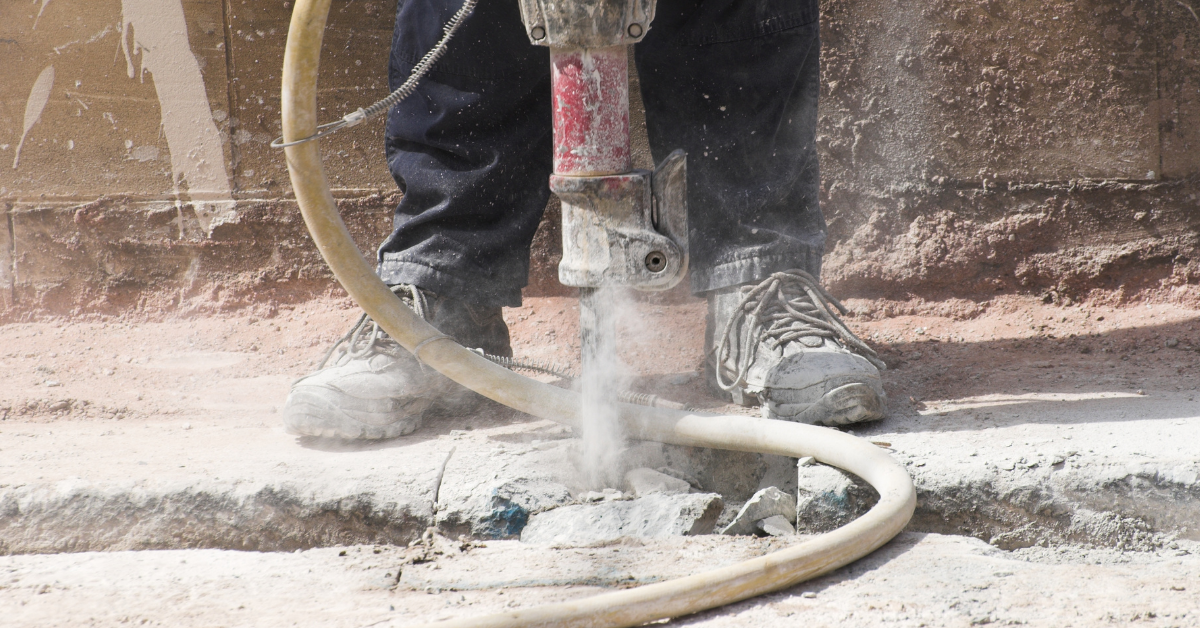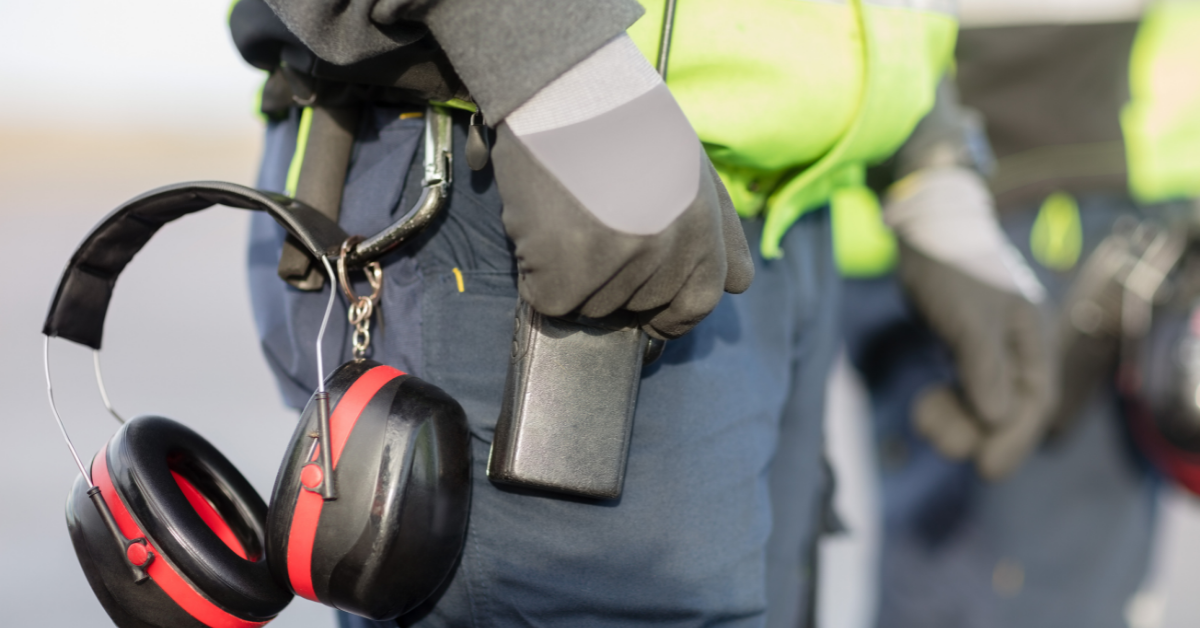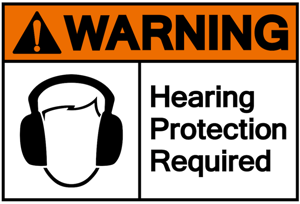Do your employees raise their voices to be heard even when they're only standing three feet away from each other? If so, it's likely the ambient noise levels are over 90 decibels. Noise-induced hearing loss is always permanent, which is why it’s so important to protect employees from hearing loss.
In fact, well over 14,000 people per year suffer workplace-related hearing loss due to noise and 75% of these cases occur in the manufacturing industry. Keep reading for a deep dive into workplace noise and employer responsibilities for mitigating noise exposure.
Why Is Noise Exposure Dangerous?
Have you ever left a loud venue with your ears ringing or feeling stuffed up? That's a short-term noise exposure causing a temporary change in your hearing, or a temporary threshold shift. Now imagine you're around loud noise every day, all day. An eight-hour exposure, five days a week, fifty-two weeks a year can be guaranteed to cause long-term hearing problems like tinnitus.
Tinnitus is buzzing, roaring, or ringing in your ears. It's psychologically stressful for some, although not always bothersome. Hearing loss is also associated with social isolation and dementia. Studies show that even moderate hearing loss triples your risk of dementia.
Your ears pick up small clues when you're walking so there's a link between hearing loss and balance problems. Daily activities such as socializing and watching TV are all harder when you suffer from even partial hearing loss.
What Is the Employer’s Obligation for Mitigating Occupational Noise?
NIOSH (National Institute for Occupational Safety and Health) sets recommended standards of noise exposure in the workplace. OSHA (Occupational Safety and Health Administration) sets the legal limit on noise exposure.
The NIOSH recommended exposure limit (REL) for noise is 85 decibels (dBA). The REL is a time-weighted average, and exposures above the recommended range are hazardous.
OSHA sets a maximum daily dose of noise that can be expressed as a percentage. Over an eight-hour shift, a person exposed to 85 dBA (per NIOSH) or 90 dBA (per OSHA) reaches 100% of the allowable daily dose of noise.
If the noise level increases, you must reduce the amount of time exposed to noise. It's important you understand the allowable noise levels and enforce the standards in the workplace.
Employers have both a moral and legal obligation to the health of their employees, and taking care of their hearing is crucial. There's a specific way to address the situation, which brings us to our next point.
 The Hierarchy of Control
The Hierarchy of Control
The hierarchy of control is a plan for determining how to apply effective noise controls. It helps you come up with a plan for OSHA compliance. The hierarchy of control looks like this:
- Elimination
- Substitution
- Engineering controls
- Administrative controls
- Personal protective equipment (PPE)
Elimination
When addressing noise hazards, involve your workers since they have the most insight into the problem. Eliminating the noise hazard is the most effective solution if it's possible. Sometimes it's possible to remove a step or procedure causing the bulk of the noise.
Substitution
Buy Quiet is an initiative to alert employers to the noise level of power tools and machinery workers use on the job. It's often possible to buy or rent machinery or tools that reduce noise exposure. This works best for new companies or companies replacing older equipment.
Engineering Controls
Engineering controls are often an expensive initial investment but they work well long-term. After identifying exposure sources, you may be able to design engineering controls to mitigate the noise. An example is building sound barriers or enclosures or installing mufflers on loud equipment.
It's important to note that there are machines you just can't quiet down. Furthermore, if your allotted limit is 90 dBA, there are several considerations you need to take before buying a piece of noisy equipment. It must be approximately 10 dBA lower than the environment it will be set up in to guarantee a minimal impact.
Administrative Controls
Administrative controls include reassigning employees and are not as effective as the first three controls in the hierarchy. This also includes rotating employees from noisy to quiet jobs and back. This is a potential risk to employees' hearing over time which could mean liability for you.
PPE
Personal protective equipment (PPE) is often necessary but should be a last resort. Do you already require PPE? Don't let this be your only solution.
Make it a priority to follow the hierarchy and explore all other options first. PPE is a big expense over time and requires effort on the part of the employees. They may not use PPE properly which could cause problems down the road.
 Hearing Conservation Programs
Hearing Conservation Programs

OSHA suggests a baseline noise exposure survey to determine if you need a hearing conservation program. When noise exposure changes, they recommend doing another round of noise exposure monitoring to adhere and further support your hearing conservation program.
The goal of a hearing conservation program is hearing loss prevention and hearing preservation. The program also equips employees with the devices necessary for safeguarding their hearing. All hearing protection equipment provided has been rated so purchasing the right equipment for the dBA projected in your noise exposure is critical to guaranteeing workplace safety.
In addition to this, your hearing conservation program should include the training and information required to empower your employees and stakeholders to become proactive advocates in a noisy environment. Free annual hearing exams for your workers are also a standard.
Proper implementation of hearing conservation programs reduce worker absenteeism and increase productivity.
Reduce Occupational Noise in the Workplace
As an employer, it's crucial to reduce occupational noise exposure in the workplace. It's the law but reducing noise exposure also benefits your employees.
Do you have a workplace hearing conservation program in place? Do you know how to implement one? Are you overwhelmed with understanding and meeting OSHA standards? Do you need help with your workplace hearing conservation programs? Do you need help meeting other OSHA standards?
It's not an easy task, but it helps to get someone with experience to set up a workplace plan for meeting OSHA standards for noise in the workplace.
At the Lawson Group, we help companies with programs that keep workers safe and reduce company liability. We also keep absenteeism low and worker satisfaction high through employee wellness programs. Are you ready for a happy, healthy workforce? Wondering how to meet all the OSHA noise standards? Contact us today!








